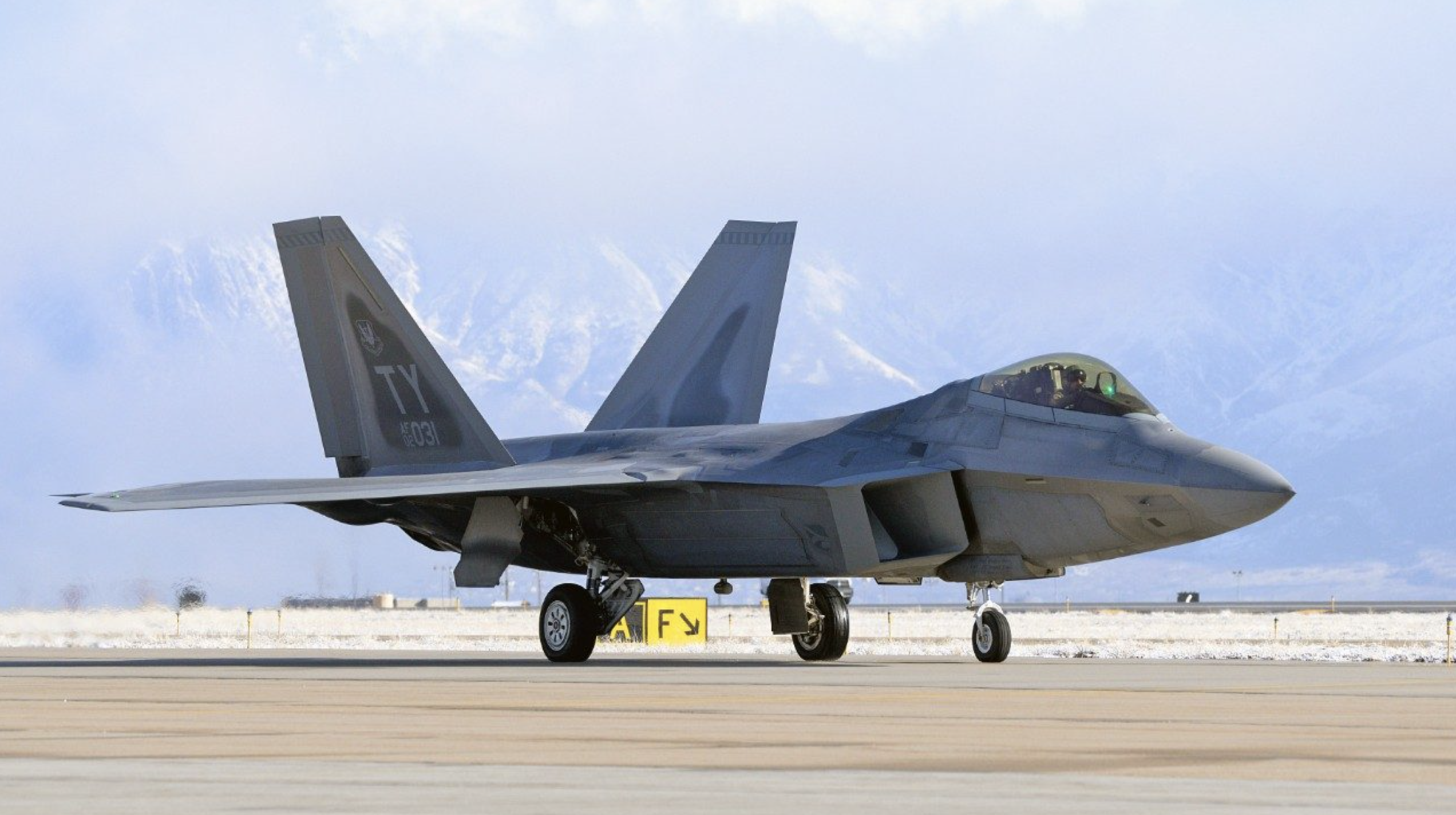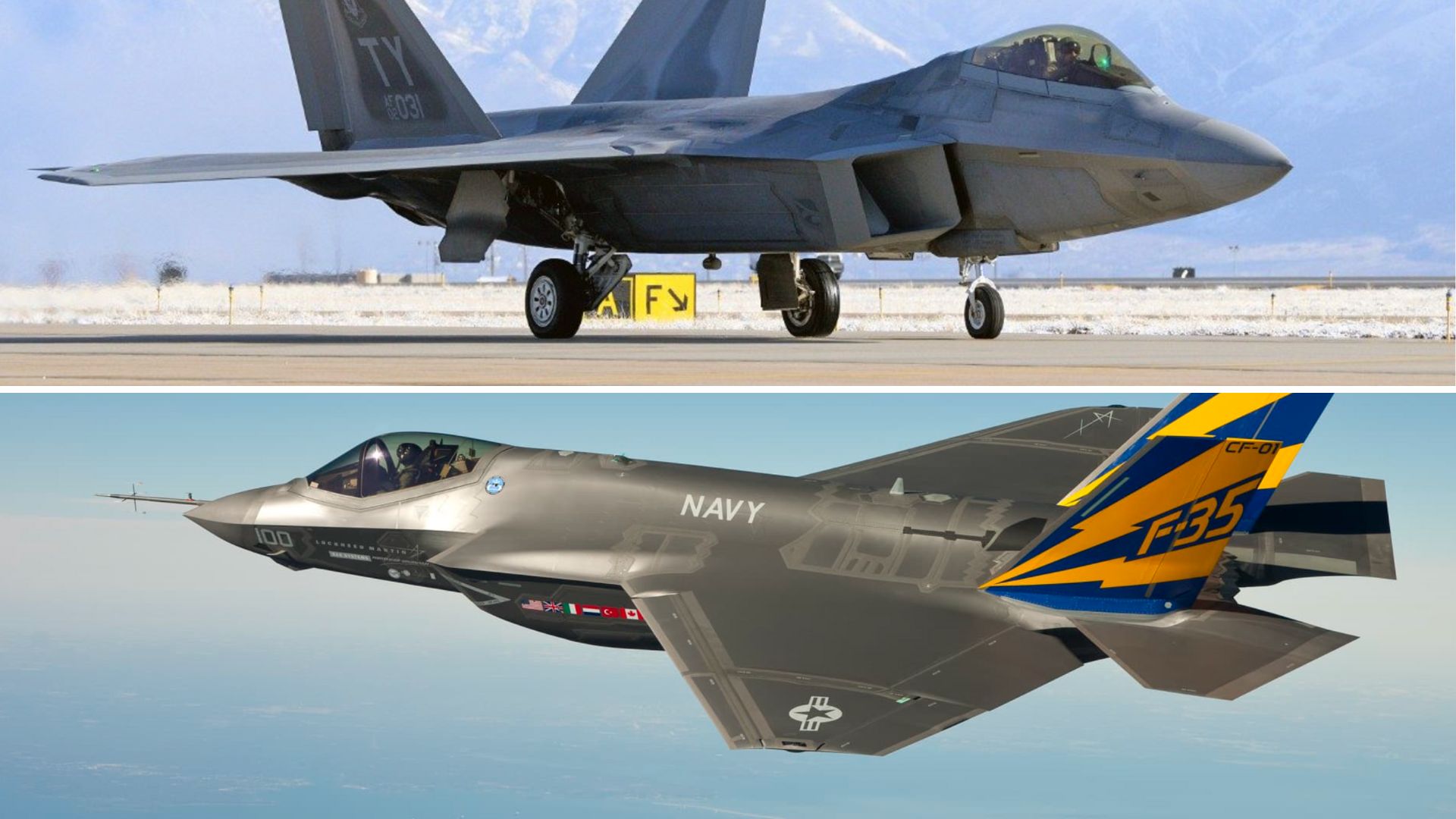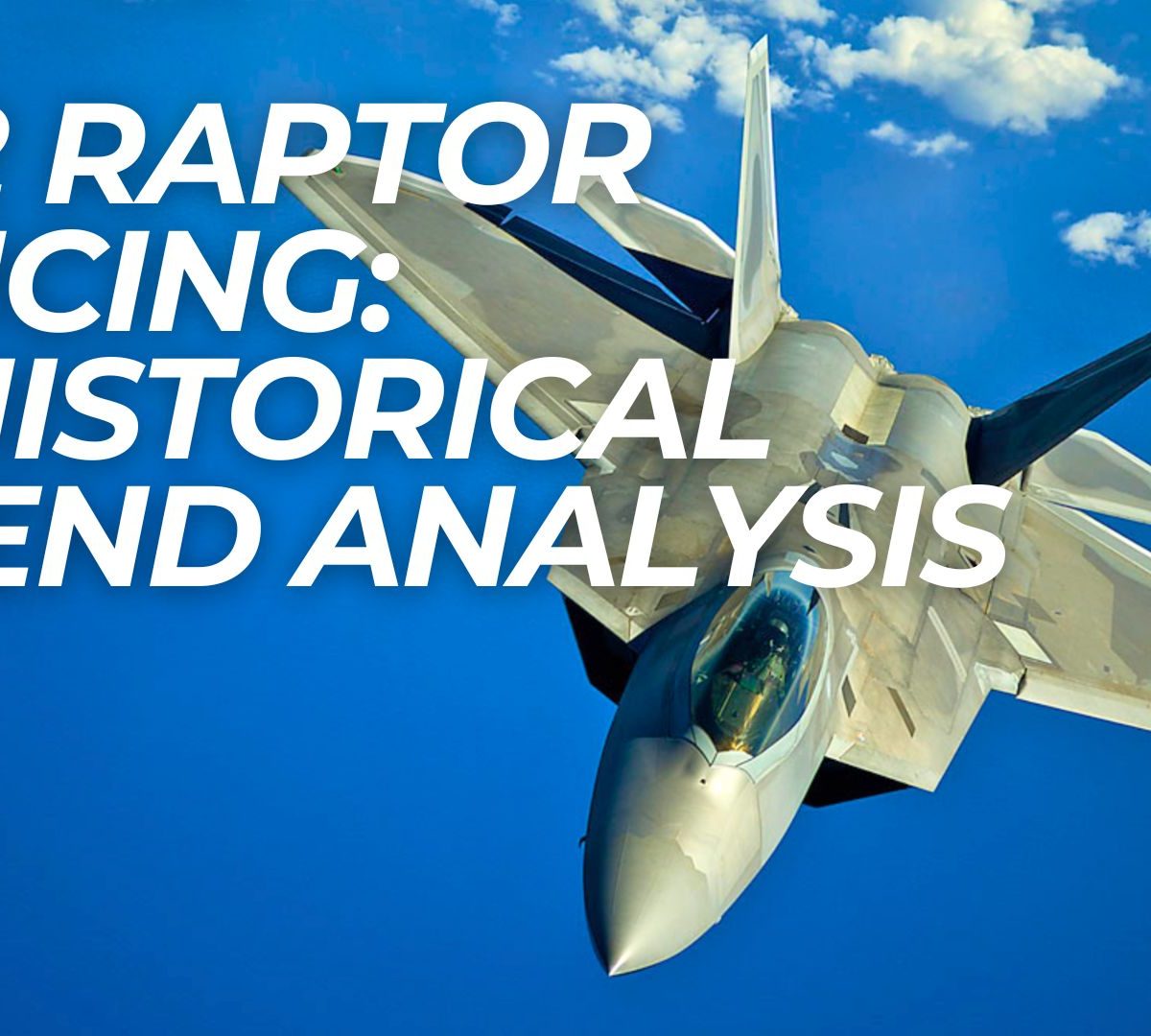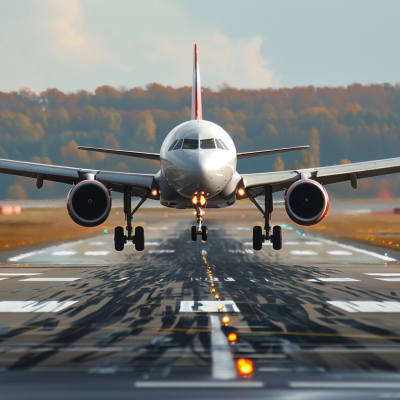The F-22 Raptor, the world’s most advanced fighter jet, has been a topic of much discussion due to its high cost.
Many have wondered about the factors contributing to its expensive price tag and how it has changed.
In this blog post, we will examine the historical trend of F-22 Raptor pricing and analyze the key factors influencing its cost from the initial development stages to the present day.
We will explore research and development expenses, the impact of advanced technology and materials, and the effect of production numbers on the overall cost per unit.
By the end of this article, you will clearly understand why the F-22 Raptor is one of the most expensive fighter jets in history.
Part 1: The Genesis and Evolution of the F-22’s Cost

1. Initial Ambitions and Cost Estimates
The F-22 Raptor was designed to be the world’s first fifth-generation fighter jet, incorporating cutting-edge technology and capabilities.
Its primary goals were to achieve unprecedented levels of stealth, advanced avionics, and superior agility.
When the program was first announced, the initial budget projections were optimistic, with the Air Force and Lockheed Martin expecting to manage costs effectively while pushing the boundaries of fighter jet technology.
2. Technological Advancements and Challenges
To achieve its ambitious goals, the F-22 program aimed to incorporate several groundbreaking technological innovations:
- Stealth capabilities: The F-22’s design minimized its radar cross-section, making it nearly invisible to enemy radar systems.
- Supercruise: The jet was designed to fly at supersonic speeds without using afterburners, enhancing its range and performance.
- Thrust vectoring: The F-22’s engines were designed to pivot, providing unmatched maneuverability.
However, these cutting-edge features presented significant challenges.
The development of new radar-absorbing materials, advanced avionics, and high-performance engines pushed the limits of existing technology.
As engineers worked to overcome these hurdles, the program began to experience cost overruns and delays, with expenses rising beyond initial projections.
Part 2: Factors Influencing the F-22’s Pricing
The F-22 Raptor’s stealth technology is a crucial aspect of its design.
It significantly reduces its radar cross-section and infrared signatures through radar-absorbing materials and the aircraft’s unique shape, which minimizes reflections.
These technological innovations allow the F-22 to operate undetected in hostile airspace, providing a significant tactical advantage.
1. Cost Implications
The advanced materials and stealth technologies used in the F-22 are expensive.
The research, development, and procurement of radar-absorbing materials are expensive, and their integration into the aircraft’s design adds complexity to the manufacturing process.
This complexity, in turn, drives up production costs, as specialized facilities, equipment, and skilled labor are required to build the F-22.
2. Research and Development
Challenges and Innovations
The F-22’s R&D phase was ambitious, aiming to incorporate unparalleled avionics, agility, and stealth capabilities.
Engineers encountered unforeseen technical challenges during development, many of which were new to the aerospace industry.
These challenges included integrating advanced sensors, developing high-performance engines capable of supercruise, and refining thrust vectoring technology.
R&D Costs
The costs associated with the F-22’s R&D efforts were substantial, as significant resources were allocated to solving unexpected problems and ensuring the aircraft remained at the forefront of fighter technology
. Developing advanced avionics, software, and materials required extensive testing and refinement, further increasing R&D expenses.
3. Production Scale and Unit Cost
Planned vs. Actual Production
Initially, the Air Force planned to acquire a large fleet of F-22s to replace its aging F-15 fighters.
However, changing geopolitical circumstances, budget constraints, and strategic reassessments significantly reduced the number of F-22s ordered.
As a result, only 195 F-22s were built, far fewer than the original plan.
Impact on Unit Cost
The reduced production scale directly impacted the F-22’s unit cost. With fewer aircraft to spread the fixed development costs, the price per plane increased significantly.
This is a common challenge in defense procurement, where lower production numbers often result in higher unit costs.
4. Operational and Maintenance Costs
Lifecycle Expenses
In addition to the initial acquisition costs, the F-22’s operational expenses are substantial.
Routine maintenance, mid-life upgrades, and unforeseen repairs are necessary to keep the aircraft in top condition and maintain its air dominance.
These activities ensure the F-22’s operational readiness and preserve its technological edge.
Cost Projections and Upgrades
Maintaining the F-22 fleet through 2030 is expected to incur significant costs, considering factors such as inflation, technological upgrades, and increased maintenance requirements as the aircraft ages.
The Air Force has planned several programs and upgrades to enhance the F-22’s capabilities and extend its service life, such as modernizing its avionics and integrating new weapons systems.
These upgrades will contribute to the aircraft’s overall lifecycle costs.
Part 3: Comparisons and Contrasts

1. Comparison with Other Aircraft
When comparing the F-22 Raptor to other modern fighter jets, such as the F-35 Lightning II, it’s important to consider their development, production costs, and capabilities.
The F-35, a more recent fifth-generation fighter, was designed to be a more affordable and versatile alternative to the F-22.
While the F-35’s development costs were high, its production costs were lower than those of the F-22 due to a larger production run and a focus on cost-saving measures.
Regarding capabilities, the F-22 is optimized for air superiority, with unmatched stealth, speed, and agility.
The F-35, the other hand, is a multirole fighter designed for various missions, including air-to-ground strikes and electronic warfare.
While the F-35 incorporates advanced stealth technology, it is less specialized for air dominance than the F-22.
2. Cost-Effectiveness and Value Proposition
Analyzing the F-22’s cost-effectiveness and value proposition in modern air warfare is complex.
On one hand, the aircraft’s high costs have led to a smaller fleet size than initially planned, which could limit its overall impact in a large-scale conflict.
Additionally, the F-22’s specialized role as an air superiority fighter may not be as flexible as multirole aircraft like the F-35.
However, the F-22’s unique capabilities, including its unrivaled stealth, supercruise, and thrust vectoring, provide a significant advantage in air-to-air combat.
In a future conflict against a near-peer adversary with advanced air defenses and fighter jets, the F-22’s ability to penetrate enemy airspace undetected and engage targets could be crucial.
Moreover, the F-22’s presence can act as a deterrent, discouraging potential adversaries from engaging in hostile actions.
The aircraft’s reputation as the world’s most advanced fighter jet can psychologically impact enemy decision-making.
Ultimately, the F-22’s cost-effectiveness and value proposition must be weighed against the United States’ specific needs and threats.
While its high costs have drawn criticism, the F-22’s unique capabilities and potential to dominate the skies make it a valuable asset in the nation’s air power arsenal.
Part 4: Strategic Implications and Future Outlook
Strategic Importance Despite High Costs Despite the high costs associated with the F-22 Raptor, the aircraft remains strategically important for the United States.
In an increasingly complex global security environment characterized by the rise of near-peer competitors and the proliferation of advanced air defense systems, the F-22’s unique capabilities are crucial for maintaining air superiority.
The F-22’s ability to penetrate contested airspace, gather intelligence, and engage targets undetected provides the U.S. with a significant advantage in potential conflicts.
The aircraft’s presence can also be a powerful deterrent, shaping adversaries’ perceptions and decision-making.
1. Budgetary Challenges and Impact on Future Projects
The F-22’s high costs have highlighted the Pentagon’s budgetary challenges and the difficult trade-offs involved in military procurement.
As defense budgets face pressure and competing priorities emerge, the cost-effectiveness of expensive platforms like the F-22 is under increased scrutiny.
These budgetary constraints may impact future military aviation projects, such as developing sixth-generation fighters or procuring additional fifth-generation aircraft.
Policymakers and defense planners must balance the need for cutting-edge capabilities with the realities of finite resources.
2. Future Upgrades and Cost Projections
To maintain the F-22’s air dominance and ensure its relevance in the face of evolving threats, the Air Force has planned several upgrades for the aircraft.
These include enhancements to avionics, sensors, and weapon systems and integration of new technologies to improve situational awareness and combat effectiveness.
However, these upgrades come with additional costs, both in terms of research and development and implementation.
As the F-22 fleet ages, maintenance and repair costs are expected to rise, further straining budgets.
Balancing the need to maintain the F-22’s technological edge with the challenges of escalating costs will be a key issue for policymakers and military leaders in the coming years.
This may involve exploring innovative acquisition strategies, such as performance-based logistics contracts or public-private partnerships, to optimize sustainment and reduce lifecycle costs.
Conclusion
The F-22 Raptor’s journey from an ambitious concept to a crucial asset in the U.S. military arsenal has been marked by technological triumphs and financial challenges.
While its cutting-edge capabilities have solidified America’s air superiority, the high costs associated with its development and production have sparked debate and scrutiny.
Reflecting on the lessons learned from the F-22 program, it’s clear that striking a balance between technological ambition and fiscal responsibility is essential for future defense projects.
The F-22’s story underscores the need for adaptable procurement strategies and prudent budget management in an ever-evolving global security landscape.
The F-22 will continue to play a vital role in U.S. air dominance.
Still, its future will depend on the military’s ability to navigate the complexities of maintaining and upgrading this remarkable aircraft.






